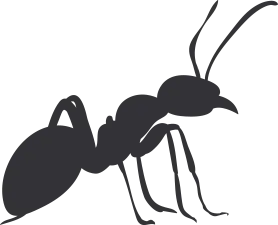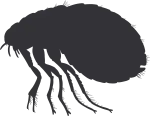Is there a mouse in the house?
Though mice and rat infestations are fairly common, they can be surprisingly hard to detect. Oftentimes, by the time you become aware of an infestation, things have already escalated. In fact, you may never even detect an infestation if it isn’t severe. Now that we’ve heightened your rodent-related stress, we have some good news. If you’re privy to the signs of a mouse or rat infestation, you can nip it in the bud before it becomes disastrous.
Resolving a rodent infestation has everything to do with time. Catching a mouse or rat infestation in its early stages can prevent it from becoming a more difficult-to-control problem that can cause damage to property and pose health risks. There are several telltale signs that an unwanted rodent guest has made itself comfortable in your home or business.
Droppings
The first (and perhaps most obvious) is droppings. They resemble dark seeds, and fresh droppings are often shiny in appearance. These are most commonly found around food packages, in drawers or cupboards, and under the sink. Why under the sink? Because the pipes leading to and from the sink can leave small gaps in the wall, and our rodent friends can squeeze through holes as small as ¼”.
Nesting Materials
Spotting nesting materials is another indication that something could be awry. Materials like shredded paper, fabric or dried plant matter in unexpected places, such as corners of rooms or inside cabinets, are signs that there may be a small visitor trying to settle into its new home. Both rats and mice are attracted to dark, enclosed, quiet spaces, so their nests are typically in low traffic areas.
Holes in the Wall
Another seemingly obvious signal of an infestation is the presence of holes that look like they’ve been chewed in your walls or flooring. However, these holes aren’t as obvious as cartoons like Tom and Jerry led you to believe (cue the perfectly arched mouse hole along the base molding). They’re fairly small in size: gnawed mice holes are small and can be around the size of a dime, whereas rat holes are slightly larger, closer to the size of a quarter. Areas that are vulnerable to entry include damaged walls or panels, cracks in the foundation, and gaps between building materials. Keep in mind that these holes can be at any height, as mice and rats are skilled vertical climbers.
Stale Odor
Mice and rats have a distinctive odor that can become more pronounced as their population increases. This smell is often described as stale or musty and comes from a combination of their urine, feces, and pheromones. Detecting this type of odor specifically in enclosed or hidden areas like cabinets, behind furniture, or in the attic, may mean you have an issue on your hands.
Plan of Attack
So what’s the best way to avoid a rodent infestation? It’s prudent to perform a thorough cleaning and inspection under your sinks and in your drawers and cupboards on a regular basis to verify that things are looking as they should. Ensuring that food is properly stored and food packages are tightly sealed is also good practice. It also never hurts to frequently perform a quick scan of the walls and flooring of your home to confirm there are no gaps or holes that could be a point of entry.
You don’t have to go home, but you can’t stay here.
If at any point you encounter an indication that a mouse or rat has made its way inside your home, it’s time to call in the professionals. The team at Excelsior Pest Group has extensive experience and training in the removal of rodent infestations. Our certified technicians are equipped with cutting-edge technologies and environmentally friendly practices to eliminate the issue and let you get back to peaceful, pest-free living.



 Ants
Ants Bees, Wasps, & Hornets
Bees, Wasps, & Hornets Spiders
Spiders Cluster Flies
Cluster Flies Bed Bugs
Bed Bugs Mice & Rats
Mice & Rats Cockroaches
Cockroaches Fleas
Fleas Stink Bugs
Stink Bugs